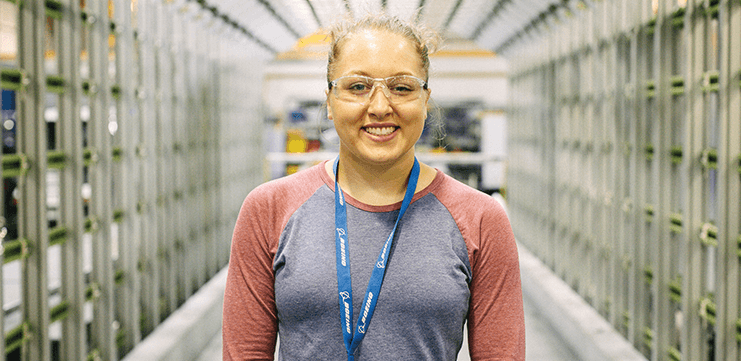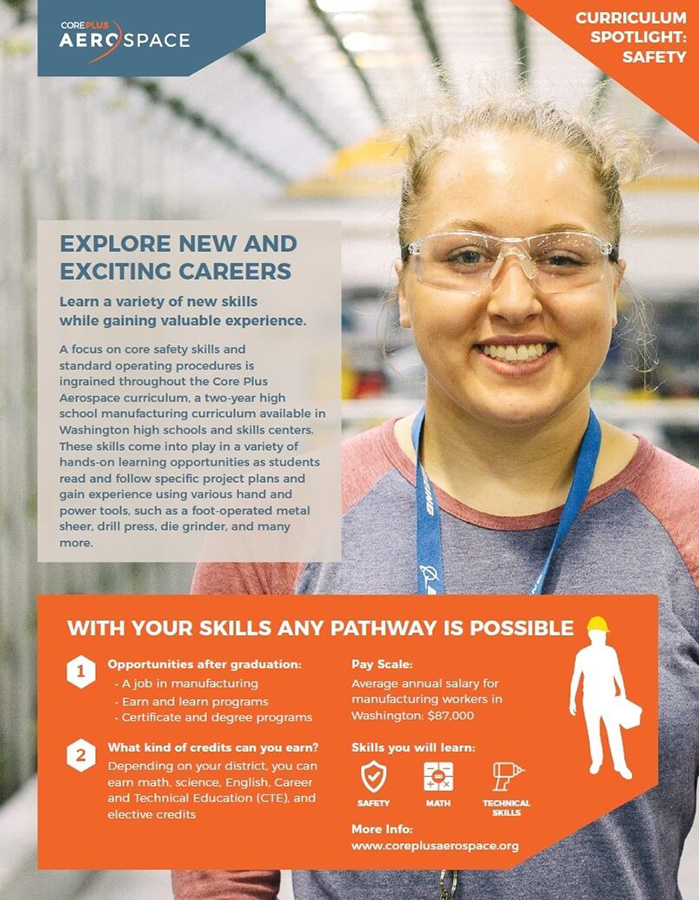
“What will students learn through Core Plus Aerospace?”
That’s a question we hear from students, parents, and educator leaders across Washington state, even more so as more schools continue to integrate Core Plus Aerospace into their course offerings and now that Core Plus has been identified as one of multiple pathways to graduation. It’s a question we are excited to help answer with the launch of our ‘Curriculum Spotlight’ series.
Through this series, we will regularly shine a spotlight on a core instruction unit or skill set delivered through the Core Plus Aerospace curriculum. As a reminder, year one of Core Plus Aerospace focuses on skills common to all manufacturing environments. Year two dives further into skills specific to the aerospace industry.
You’ll get more information on curriculum topics such as print reading, use of shop tools, riveting, and much more. You’ll get insight into what’s included in the curriculum, exactly how students will learn those skills in a hands-on way, and how content aligns with Washington State Learning Standards.
In this first Spotlight, we shine a light on Safety, its importance in the workplace and best practices in fostering a safe work environment.
Here’s a preview of the Curriculum Spotlight: Safety:
“Safety while using shop tools is emphasized throughout the two-year Core Plus Aerospace curriculum, which includes classroom instruction and hands-on coursework. In one sample lesson, students are given graphs which provide information on injuries and illnesses in a variety of workplaces – learning what could happen if safety protocol isn’t followed.
“Among many skills, students learn to:
- Demonstrate a positive safety attitude by complying with all safety and environmental requirements.
- Identify the government, environmental and industrial regulatory agencies that govern the workplace.
- Demonstrate safe practices in the manufacturing (or shop) environment.”
The skills developed through Core Plus Aerospace can lead to career opportunities after graduation, including a job in manufacturing, earn and learn programs (such as apprenticeships), and certificate and degree programs. Depending on the school district, students can earn math, science, English, Career and Technical Education (CTE), and elective credits.
Learn more by downloading the Curriculum Spotlight: Safety resource. Sign-up to receive our emails to get more curriculum Spotlights in the months to come. Follow and engage with us on social media using #CorePlusAerospace.


